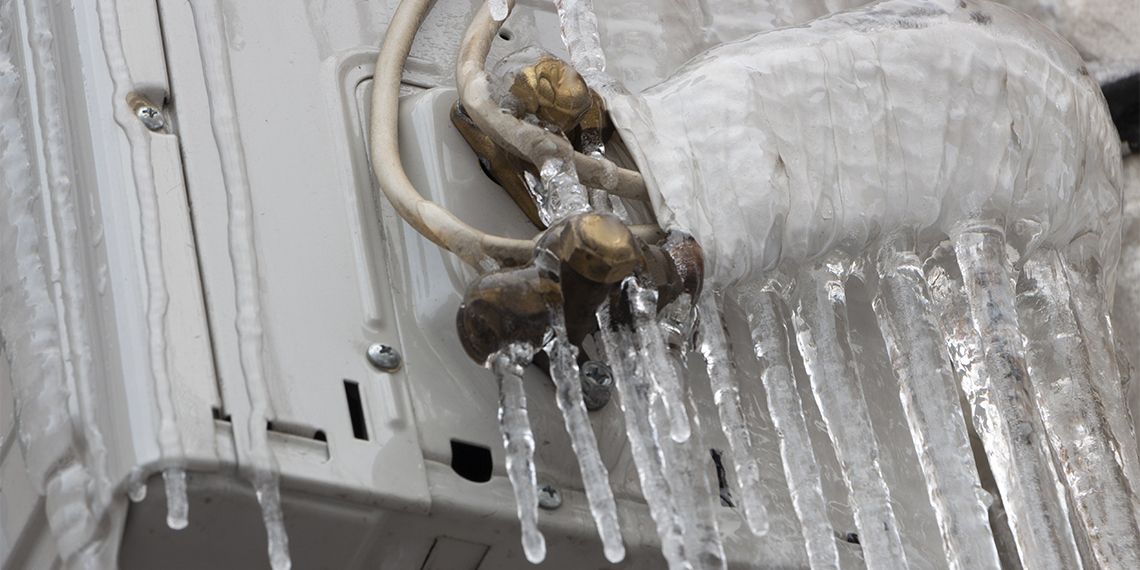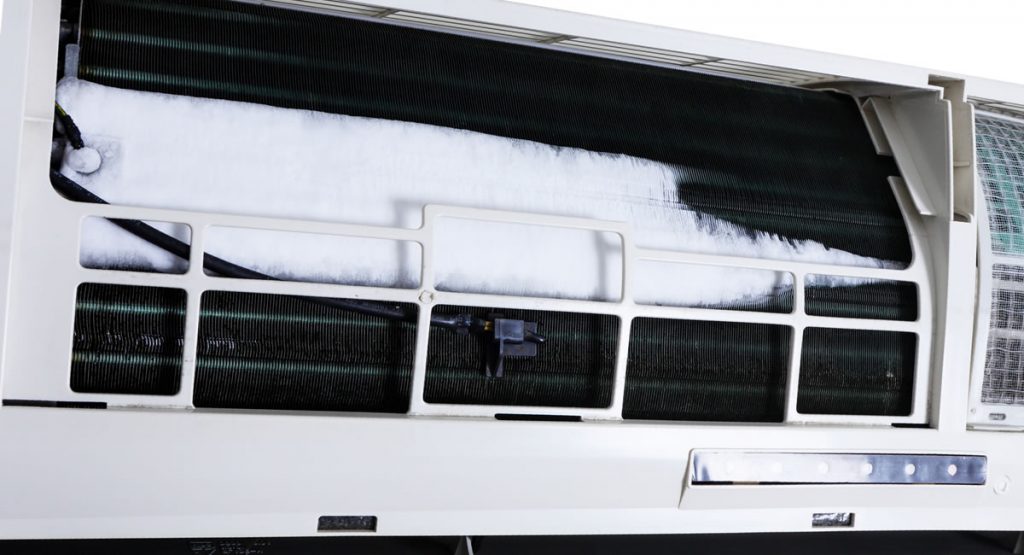How to Deal With a Frozen AC Pipe - Essential Steps for Recovery
How to Deal With a Frozen AC Pipe - Essential Steps for Recovery
Blog Article
This post which follows involving What Causes AC Pipes To Freeze? is unquestionably enjoyable. Read it for your own benefit and see what you think of it.

Intro
Discovering that your a/c pipeline is frozen can be concerning, particularly during warm summer months when you rely upon your air conditioning system the most. Comprehending what to do in such a circumstance is vital to prevent further damage to your cooling system and ensure your comfort inside your home.
Recognizing the Causes
Numerous variables can contribute to the cold of an a/c pipeline. Understanding these reasons can aid you address the problem effectively.
Lack of Airflow
One typical source of a frozen air conditioner pipe is inadequate airflow. When the airflow over the evaporator coil is restricted, it can create the coil to go down below freezing temperature level, bring about ice formation on the pipeline.
Low Refrigerant Levels
Insufficient cooling agent degrees in your air conditioning system can likewise cause a frozen pipe. Low cooling agent degrees can cause the pressure in the system to drop, leading to the freezing of dampness on the evaporator coil.
Cold Weather Conditions
In cooler environments, freezing temperatures outside can contribute to the freezing of AC pipes. If your air conditioning system is not properly protected or if there are leaks in the ductwork, cool air can infiltrate the system, causing the pipe to freeze.
Dirty Air Filters
Dirty or blocked air filters can restrict air flow in your air conditioner system, leading to different concerns, consisting of a frozen pipe. It's necessary to change or cleanse your air filters on a regular basis to make sure proper airflow and prevent ice buildup.
Indications of a Frozen Air Conditioning Pipe
Identifying the signs of a frozen a/c pipeline is important for timely action.
Minimized Airflow
If you see a significant reduction in air movement from your vents, it can suggest a frozen pipe.
Ice Buildup on the Pipe
Noticeable ice buildup on the refrigerant line or the evaporator coil is a clear indicator of an icy air conditioner pipe.
Unusual Sounds from the Unit
Uncommon noises, such as hissing or gurgling, originating from your air conditioner device can signal that there's ice present on the pipe.
Immediate Actions to Take
When faced with a frozen AC pipe, it's necessary to act rapidly to avoid additional damage to your air conditioning system.
Shutting off the AC
The very first step is to turn off your a/c unit to prevent the system from running and aggravating the issue.
Checking for Blockages
Evaluate the area around the interior system for any type of obstructions that might be obstructing air flow, such as furniture or drapes.
Thawing the Pipe
You can use gentle techniques like placing towels soaked in cozy water around the icy pipeline to aid thaw it gradually.
Safety nets
Taking preventive measures can help avoid future events of an icy AC pipeline.
Routine Maintenance Checks
Schedule regular upkeep get in touch with a specialist HVAC service technician to guarantee that your air conditioner system is running efficiently.
Transforming Air Filters
On a regular basis replace or cleanse your air filters to prevent air flow constraints and preserve optimum performance.
Insulating Exposed Pipes
If your air conditioning pipelines are exposed to chilly temperature levels, consider protecting them to stop cold during winter season.
Seeking Professional Help
If DIY methods stop working to settle the issue or if you're unsure about exactly how to proceed, it's ideal to look for aid from a certified HVAC technician.
When DIY Methods Fail
If your efforts to thaw the pipeline or address various other concerns are not successful, it's time to call in a specialist.
Value of Hiring a Professional HVAC Technician
A licensed HVAC technician has the knowledge and tools required to identify and fix problems with your a/c system safely and successfully.
Final thought
Taking care of a frozen air conditioning pipe can be a frustrating experience, yet recognizing exactly how to respond can aid reduce damages and restore convenience to your home. By comprehending the reasons, acknowledging the signs, and taking punctual action, you can properly attend to the issue and protect against future occurrences.
G UP? HOW TO FIX IT?
It happens all over America. And the rest of the world probably. It’s the hottest day ever and for some darn reason your AC isn’t cooling the house. You fiddle with the thermostat to try and fix the problem. Nada. All you can do now is go outside and check the AC unit. You make your way there and find your air conditioner unit is frozen! But how?
In this post we’ll cover how you can tell that your air conditioner has frozen (other than the obvious reasons), what could have caused the freeze, and some of the things you can do about your AC freezing up. And if you have a frozen heat pump condenser, read our blog about it to learn what to do! But remember, it is always best to avoid your AC freezing up with an AC tune up. And if you are moving into a home, it's critical to get HVAC inspection so that you are aware of an AC problems before you move in.
Keep reading and you may be able to fix the frozen AC yourself. If you can’t, call an HVAC specialist. If you live in Maryland, call SuperTech HVAC for AC repair. We’ll take care of it.
How Does An Air Conditioning Unit Work?
How you probably imagine an AC works is wrong. Contrary to popular belief, an AC system does not inject cool air into a building. Instead, it removes the heat from inside and transfers it outside. Cool huh? (Pun intended).There are 4 major components among the 3 stations of an air conditioning system: the evaporator coil, the compressor, the condenser, and the refrigerant – a special chemical that links everything together through a closed loop system.
Station 1:
Warm indoor air is sucked into the return vent, through a filter, and blows over the evaporator coil. The heat is absorbed into the cold refrigerant, turning it from liquid to gas. The air, which is now cool, is blown back into the home to areas that your thermostat, i.e. you, has decided.
Station 2:
The refrigerant makes its way outside the house to the compressor, which squeezes the warm refrigerant, raising its gaseous temperature even more.
Station 3:
When the super hot vapor refrigerant reaches the condenser, the last step, the heat is expelled and absorbed into the outdoor air. The refrigerant instantly cools, which changes it from gas back to liquid form. The cold liquid refrigerant is now ready to return to station 1 and repeat the process.
Is Your AC Freezing Up? Here Are The Signs:
As you may have guessed, your air conditioner unit freezing up on a hot day is not normal.
If this happens, there's no need to panic. Often the issue can be solved with a little troubleshooting. If the AC unit is left frozen for too long however, you may find yourself with a bigger problem.
First things first, how do you know your AC is frozen?
Well, the obvious sign is the ice on your refrigerant line-set pipe. Simply check between your outdoor AC unit and your home's exterior wall to see whether your AC line frozen.
You might also have a frozen evaporator coil. This one's not as easy to check. You'll need to open a panel on the indoor unit to inspect. Don't do this unless you're handy. If you aren't, call an HVAC pro like SuperTech HVAC or you may damage something in the process.

We had been brought to that article about Air Conditioner Frozen? How To Fix your Frozen AC Line from a friend on another domain. Sharing is caring. Helping people is fun. I truly appreciate reading our article about Have a Frozen AC Line? Here’s How to Fix It.
Schedule Here Report this page